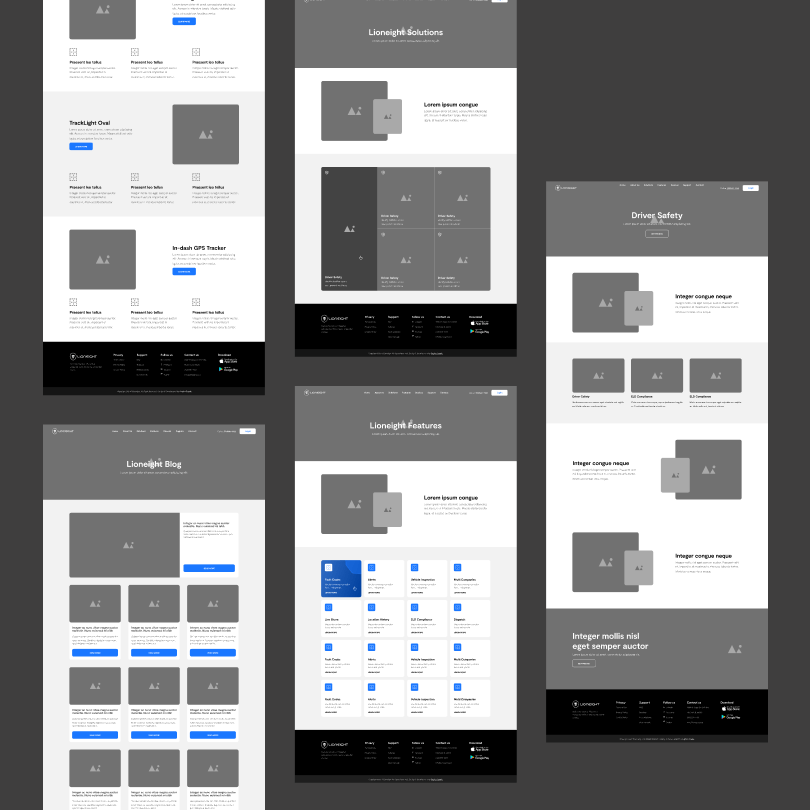Skilled designers know that when designing a product, it's not enough to forecast how people will feel while using it. Their success lies in their ability to create multifaceted experiences that ensure customers enjoy equally the palpable and intangible dimensions of every item.
In a practical sense, that translates into user experience (UX) and customer experience (CX). One is about the interaction with the product itself, and the other is about every interaction one has had with the brand.
Both are just as important for business success and customer satisfaction and loyalty. However, many people use CX and UX interchangeably or prioritize one over the other.
And indeed, it seems that CX will come first for many companies. – According to SuperOffice’s 2022 survey, nearly 46 percent of businesses will prioritize CX in the next five years.
Moreover, those that earn $1 billion annually will likely make an additional $700 million within three years of investing in CX. Why is that?
Over 86 percent of buyers are willing to give extra money for an enhanced customer experience; in return, they’ll be loyal to the company. But that isn’t to say you should disregard UX or that it will be any less significant.
In fact, 70 percent of online shoppers ditch their carts due to poor UX. That means you should optimize your website for both, or you risk losing leads and revenues.
Let’s dive deeper into the CX vs UX and highlight their differences and similarities.
CX Design vs. UX Design
What is CX?
Customer experience represents the entirety of a customer’s engagements and interactions with a brand, including its channels, marketing campaign, customer service, pricing, and brand reputation. But how do you calculate the effectiveness of CX?
Most companies measure it by tapping into a customer’s overall experience, the odds of continuing to use the product, and the likelihood of recommending it to other people. Fundamentally, UX falls into the broader dimension of CX.
On the flip side, CX includes some facets outside a product that UX doesn’t contain. Stellar CX gives customers and users the ability to have helpful, engaging, professional, and memorable interactions with representatives of a company or an organization.
Thanks to these positive engagements and communication, they feel good about the brand and the overall experience they had with that company. For example, Anna runs a Google search for information about a liberal arts degree and finds xyz.edu.
She then smoothly navigates the website looking for specific department data and finds it in milliseconds. The higher education institution’s excellent search engine optimization (SEO) allowed Anna to discover the site quickly and easily.
Since designers implemented a well-thought-out structure, taxonomy, and readability, she had no issues navigating the links and headings. Moreover, Anna needed less than 43 seconds for the three clicks she made between entering the site and getting the information she needed.
Thanks to that, she had a positive experience with the website of her potential future community college. Yet, Anna also had specific inquiries about how to enroll in this institution.
So, she called their College Information center, but the representative agents left her on hold for 15 minutes before finally answering the call. However, the rep had no up-to-date answers to Anna’s questions about the enrollment and asked her to call another day. As a result, despite the initial positive UX, she ended up with a poor CX.
And if people have a poor experience with your company’s channels or personnel, they might develop an unfavorable impression of your brand and refuse to recommend you to others.
What is UX?
User experience (UX) represents the process that design teams use to develop relevant, engaging, and meaningful experiences for all users. It includes creating the entire process of obtaining and integrating the product, encompassing design, branding, usability, responsiveness, and function.
Therefore, UX is not solely about developing easy-to-use software. It is also about thoughtfully designing experiences that accompany the product, such as the packaging, marketing campaign, and support throughout the purchase process.
UX design centers around providing solutions that effectively tackle customers’ needs and pain points. No one needs a product that serves zero purposes or makes their life more challenging.
Is Your Website CX and UX Optimized?
Even though CX encompasses UX, that doesn’t mean you should disregard the latter and hope it’s performing just as effectively. You can lose a potential customer due to poor app or site performance despite having top-notch branding and social media presence.

In fact, seamless UX is necessary for a well-rounded UX strategy. People must be able to navigate your online sites and platforms effortlessly and find what they need within minutes, or you risk losing them to your competitors.
Because of that, it’s vital to optimize your app and website with users and customers in your mind. But first, let’s clear out the difference between users and customers.
Who are Users, and Who are Customers?
These two aren’t necessarily the same, although they can be. While customers are those who obtain an offering by paying, users are the ones who use it.
An individual can be a user and a customer simultaneously, especially in B2C, where businesses sell items directly to individuals. However, a customer and a user of the same offering can be two different people.
For instance, a company representative may reach out to a vendor, asking for more information about specific software their employers are interested in purchasing. The representative might be the one to finalize the payment and buy the program, but their superiors will use it, making them users.
But both parties must have a positive experience, or a company risks negative impressions, low retention, and poor reputation. However, ensuring a consistently stellar CX is undeniably more challenging than UX because the former encompasses every touchpoint between vendors and buyers.
Here’s What to Look for When Testing Your Website UX and CX Optimization
Simplicity
Over 53 percent of mobile users leave websites after three seconds. They expect a site that’s easy to scan and navigate and doesn’t overwhelm their eyes. Pay attention to whether your website and app have a clear, simple, and uncluttered design free of unnecessary graphics and pictures.
Common Design Elements
Designers often go overboard with unorthodox and shocking designs, hoping to leave visitors in awe with a unique template. However, 52 percent prefer something simple, and perplexing aesthetics will make them bounce. Check whether you enforce a complex design on your visitors, forcing them to figure out where to click next and wonder whether they’re in the right place. It’s excellent to be creative but combine it with standard design elements and coherence.
Visual Hierarchy
Observe whether it’s easy for visitors to find what they’re looking for. To achieve that, you should focus their attention on vital page elements and push forward the ones they should see first.
The Usual UX Factors
Check whether your online platforms meet the elementary UX requirements: usability, responsiveness, credibility, usefulness, accessibility, and credibility. Also, look it up online to test if it’s easy to find and whether the title link and meta descriptions match your business purpose and function.
CTAs
A straightforward and compelling call to action should help visitors understand how to contact you and act upon that intent. They should be positioned strategically and logically, making them easy to find.
Social Media Integrations
Are your site and app connected with your company’s social media handles? Many visitors choose this option to contact for more information, which is why you must remember to enable this integration.
Multilingual Feature
This aspect matters more for global and international business with branches in various countries and working with clients and leads worldwide. Make it easy for foreigners to discover your brand and reach out by enabling a multilingual feature and ensuring it encompasses the languages of your principal target audience.
Up-to-date Links
Broken links could hinder your visitors’ experience, as they expect every link on your site and app to be valid and take them to the right page. Check and regularly monitor them to ensure everything is up-to-date and working properly.
Language
The language and vocabulary you use on every page should be concise, clear, and comprehensible.
Assistive Technology
Ensure that your website is accessible and easy to navigate for people with disabilities. It’s recommended to have assistive features, such as a screen reader, audio descriptions, transcripts, and text-to-speech.
Live Chat Feature
Help your customers get answers to their inquiries in real time without turning to phone calls and emails.
Customer Testimonials
Provide examples of first-hand experiences by adding customer testimonials, as this helps instill trust and boost loyalty.
Website and App Speed
Your app and website mustn’t have even a one-second delay in loading time, as that decreases customer satisfaction. Check the speed regularly and enhance it by using a content delivery network (CDN), enabling compression, minimizing HTTP requests, using a caching plugin, and optimizing images.
To Wrap Up
Even though CX and UX are equally vital for satisfaction and positive impressions of people interacting or doing business with your company, many designers disregard the importance of optimizing the website design for both. But if you want to ensure your channels are effective and don’t deter any potential buyer, you can reach out to a UX design agency.
Putting effort into this aspect and optimizing your online platforms for UX/CX will benefit your customer retention and loyalty and lead to lasting relationships.





